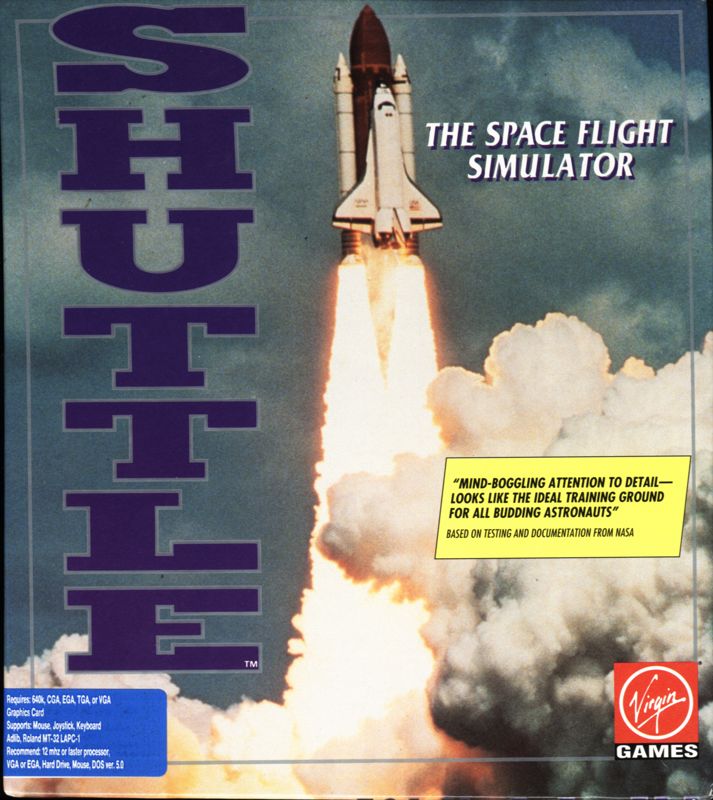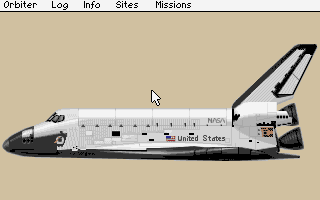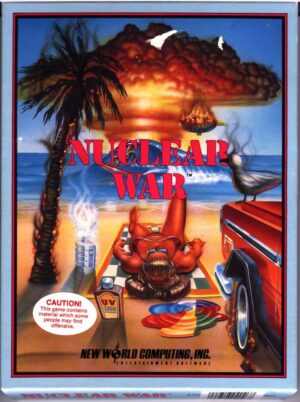Retro Replay Review
Gameplay
Shuttle: The Space Flight Simulator prides itself on an unparalleled level of realism, demanding that players become intimately familiar with every switch, dial, and display in the cockpit. The inclusion of a thick printed manual and a large A2-size instrument sheet underscores the depth of knowledge required: with nine separate cockpit panels to master, players will spend hours decoding systems before even initiating a launch. This steep learning curve can be daunting, but it ensures that every successful maneuver feels hard-won and authentic.
(HEY YOU!! We hope you enjoy! We try not to run ads. So basically, this is a very expensive hobby running this site. Please consider joining us for updates, forums, and more. Network w/ us to make some cash or friends while retro gaming, and you can win some free retro games for posting. Okay, carry on 👍)
Controls in this simulator are a mix of point-and-click mouse interactions for precise instrument adjustments and essential keyboard shortcuts for rapid operations. While the manual painstakingly details each function, veteran players will quickly develop their own hotkeys to streamline complex sequences—especially during launch countdowns. Attempting a mission without investing time in memorizing shortcuts almost guarantees missed windows during critical phases such as engine ignition and payload bay operations.
Time management is another gameplay cornerstone: with real-time countdowns extending up to five hours for a proper pre-launch sequence, missions can realistically span days if the time-advance feature is not employed. For those who crave total immersion, foregoing time skip means you’ll track your shuttle from T-0 to orbit insertion in true-to-life duration. Alternatively, the game offers time acceleration to keep play sessions manageable, allowing you to focus on pivotal moments without sacrificing realism.
Graphics
Given its vintage origins, Shuttle’s visuals are modest by modern standards, but this retro aesthetic serves the simulation’s goals. The cockpit panels are rendered with clear, legible instruments that, despite a limited color palette, accurately convey the look and feel of a real shuttle control deck. Pixelation is noticeable close-up, yet each gauge and readout remains distinguishable during critical operations.
External views provide rewarding perspectives on every phase of flight. From the launch pad camera showing the shuttle atop the stack to orbital flybys of Earth’s curvature, these vantage points offer moments of breathtaking immersion. While lacking high-definition textures, the animations of booster separation and orbital maneuvers capture the essence of the shuttle’s mechanical ballet.
Lighting and shading are handled simply but effectively. During night-time launches or orbital passes, the shuttle’s underbelly glows realistically beneath Earthshine, and console backlighting transitions naturally between operational modes. Although there is no dynamic weather or particle effects, the game makes up for this with faithful instrument readouts and smooth transitions between external and internal views.
Story
Shuttle: The Space Flight Simulator does not follow a traditional narrative in the way many modern games do. Instead, its “story” unfolds through mission objectives modeled on real NASA flight plans. Each task—from pre-launch checks to payload deployment and re-entry—serves as a chapter in your personal astronautic journey, letting you shape the narrative through your decisions and execution.
The absence of cinematic cutscenes or voiced characters shifts focus squarely onto the procedural milestones of the shuttle program. You become the protagonist, guided by mission briefings that outline goals such as satellite retrieval or International Space Station docking. As you progress, the complexity ramps up, providing a sense of progression akin to a storyline without scripted dialogue.
For players who appreciate emergent narratives born from technical challenge, the tension of a fault left unchecked or a perfect orbit insertion can be as dramatic as any penned plot twist. Each successful mission adds to your personal logbook, fostering a sense of accomplishment that replaces traditional storytelling with authentic astronaut credentials.
Overall Experience
Shuttle: The Space Flight Simulator is a labor of love for spaceflight enthusiasts, offering an unmatched level of technical depth. The learning curve may intimidate casual players, but those willing to invest in mastering the manual and instrument sheet will find themselves rewarded with a profoundly immersive simulation. There’s an undeniable thrill in witnessing your own careful inputs launch a massive spacecraft into orbit.
The combination of real-time operations, detailed cockpit management, and varied external viewpoints delivers an experience that feels more like professional training software than a game. While it lacks the polish and accessibility of contemporary titles, its fidelity to real shuttle procedures makes every mission feel consequential and educational.
Ultimately, this simulator stands as a milestone in the history of spaceflight gaming. For potential buyers, it’s best approached with patience and a genuine interest in the technicalities of NASA’s Shuttle program. If you seek a cinematic blockbuster, you’ll likely find Shuttle’s pace too methodical. But if you long for a rigorous, authentic journey into space, few titles match the depth and realism packed into this classic simulator.
 Retro Replay Retro Replay gaming reviews, news, emulation, geek stuff and more!
Retro Replay Retro Replay gaming reviews, news, emulation, geek stuff and more!









Reviews
There are no reviews yet.